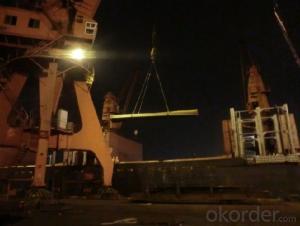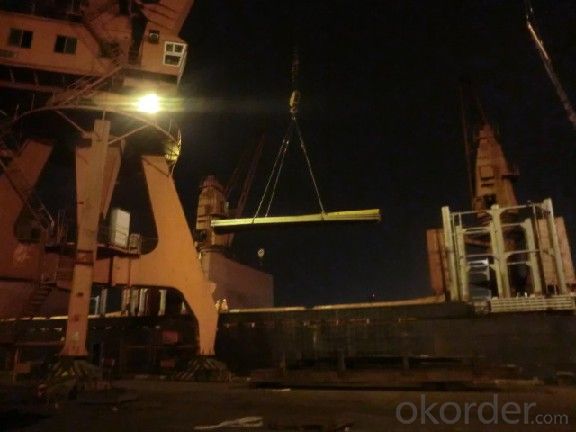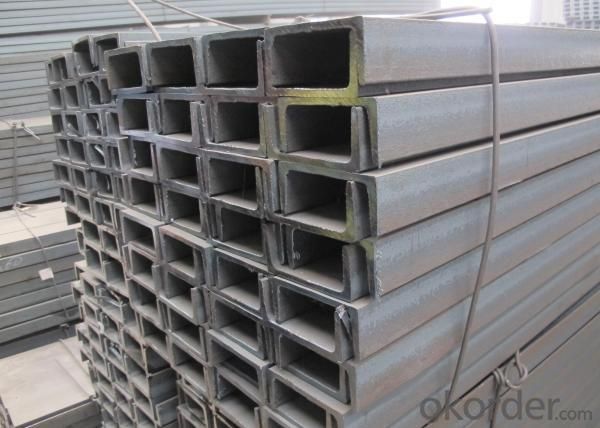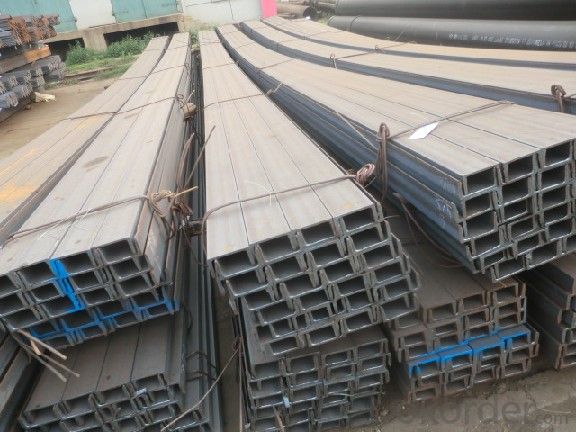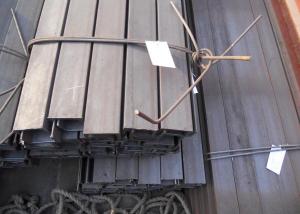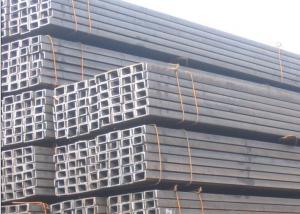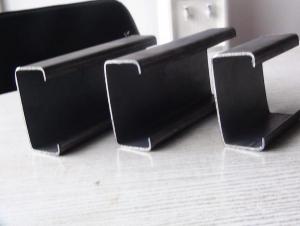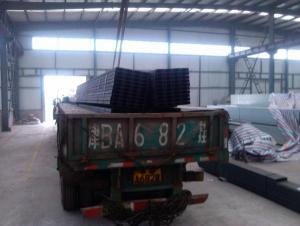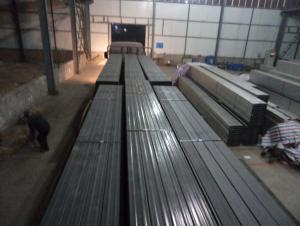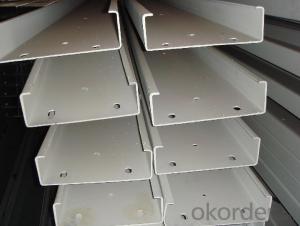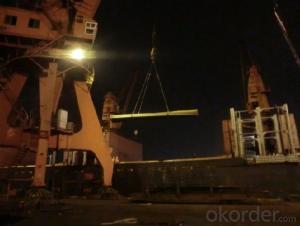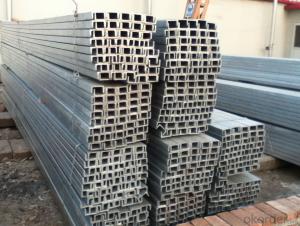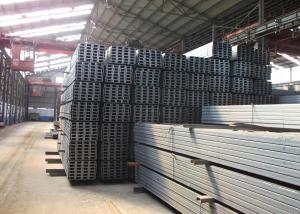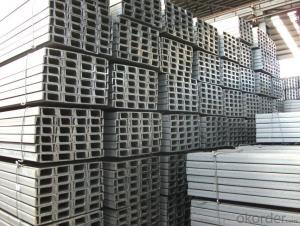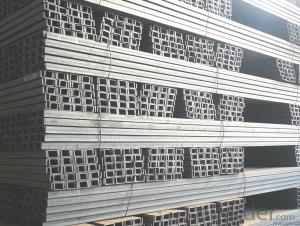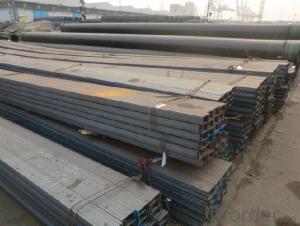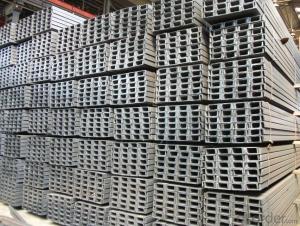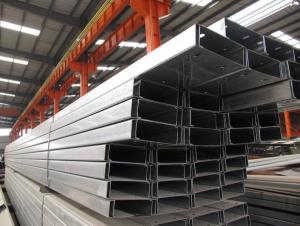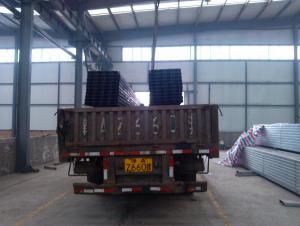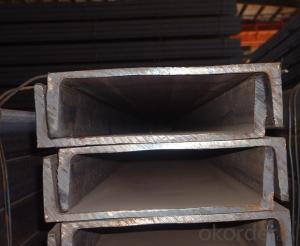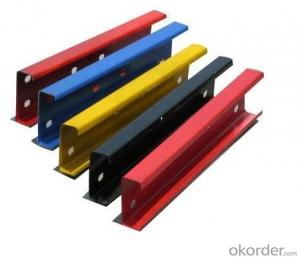Structure U Channel Steel high quality
- Loading Port:
- Tianjin
- Payment Terms:
- TT OR LC
- Min Order Qty:
- 25 m.t
- Supply Capability:
- 20000 m.t/month
OKorder Service Pledge
OKorder Financial Service
You Might Also Like
Product Description:
OKorder is offering Structure U Channel Steel high quality prices with worldwide shipping. Our supplier is a world-class manufacturer of steel, with our products utilized the world over. OKorder annually supplies products to European, North American and Asian markets. We provide quotations within 24 hours of receiving an inquiry and guarantee competitive prices.
Product Applications:
Structure U Channel Steel high quality are ideal for structural applications and are widely used in the construction of buildings and bridges, and the manufacturing, petrochemical, and transportation industries.
Product Advantages:
OKorder's Structure U Channel Steel high quality durable, strong, and resist corrosion.
Main Product Features:
· Premium quality
· Prompt delivery & seaworthy packing (30 days after receiving deposit)
· Corrosion resistance
· Can be recycled and reused
· Mill test certification
· Professional Service
· Competitive pricing
Product Specifications:
Specifications of Steel U Channel:
Standard Applied: GB Standard, EN Standard(UPN), JIS Standard
Sizes: 50mm to 300mm
Material Grade: Q235B, Q345B, S235JR, SS400, ASTM A36
As shown in the figure:
JIS U CHANNEL | Standard h | Sectional b | Dimension s | t | Mass: Kg/m |
(mm) | (mm) | (mm) | (mm) | ||
50x25 | 50 | 25 | 3.0 | 6.00 | 2.37 |
75X40 | 75 | 40 | 3.8 | 7.00 | 5.30 |
75X40 | 75 | 40 | 4.0 | 7.00 | 5.60 |
75X40 | 75 | 40 | 4.5 | 7.00 | 5.85 |
75X40 | 75 | 40 | 5.0 | 7.00 | 6.92 |
100X50 | 100 | 50 | 3.8 | 6.00 | 7.30 |
100X50 | 100 | 50 | 4.2 | 6.00 | 8.03 |
100X50 | 100 | 50 | 4.5 | 7.50 | 8.97 |
100X50 | 100 | 50 | 5.0 | 7.50 | 9.36 |
125X65 | 125 | 65 | 5.2 | 6.80 | 11.66 |
125X65 | 125 | 65 | 5.3 | 6.80 | 12.17 |
125X65 | 125 | 65 | 5.5 | 8.00 | 12.91 |
125X65 | 125 | 65 | 6.0 | 8.00 | 13.40 |
150x75 | 150 | 75 | 5.5 | 7.30 | 14.66 |
150x75 | 150 | 75 | 5.7 | 10.00 | 16.71 |
150x75 | 150 | 75 | 6.0 | 10.00 | 17.90 |
150x75 | 150 | 75 | 6.5 | 10.00 | 18.60 |
Note: We are able to supply other dimensions and sizes, which depends on the customer's requirements for the quantity.
Chemical Composition of Q235B Steel U Channel:
Alloy No | Grade | Element(%) | ||||
C | Mn | S | P | Si | ||
Q235 | B | 0.12-0.20 | 0.3-0.7 | ≦0.045 | ≦0.045 | ≦0.3 |
FAQ:
Q1: Why buy Materials & Equipment from OKorder.com?
A1: All products offered byOKorder.com are carefully selected from China's most reliable manufacturing enterprises. Through its ISO certifications, OKorder.com adheres to the highest standards and a commitment to supply chain safety and customer satisfaction.
Q2: What makes stainless steel stainless?
A2: Stainless steel must contain at least 10.5 % chromium. It is this element that reacts with the oxygen in the air to form a complex chrome-oxide surface layer that is invisible but strong enough to prevent further oxygen from "staining" (rusting) the surface. Higher levels of chromium and the addition of other alloying elements such as nickel and molybdenum enhance this surface layer and improve the corrosion resistance of the stainless material.
Q3: Can stainless steel rust?
A3: Stainless does not "rust" as you think of regular steel rusting with a red oxide on the surface that flakes off. If you see red rust it is probably due to some iron particles that have contaminated the surface of the stainless steel and it is these iron particles that are rusting. Look at the source of the rusting and see if you can remove it from the surface.
Images:
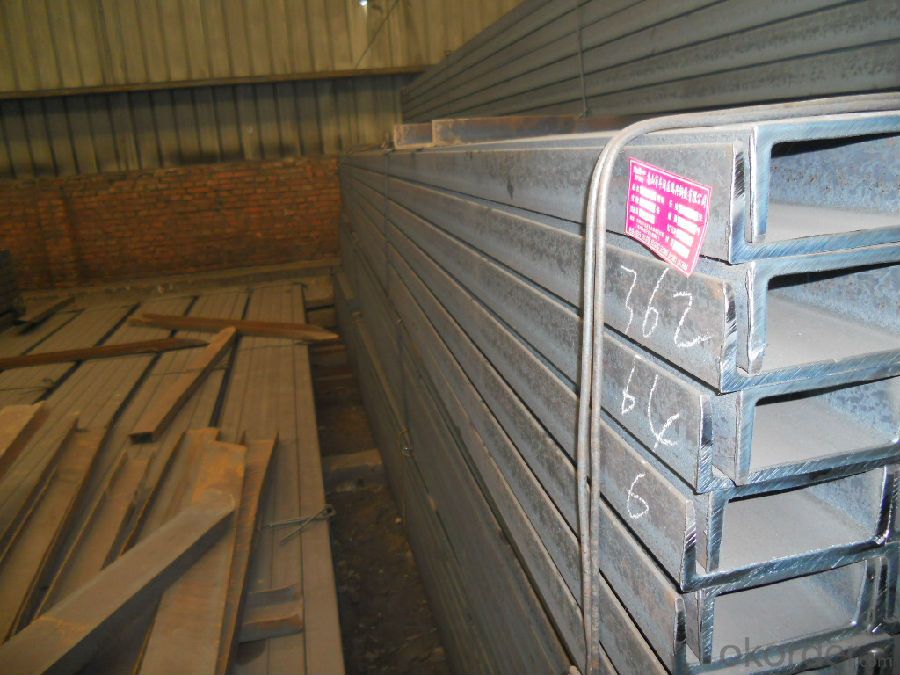
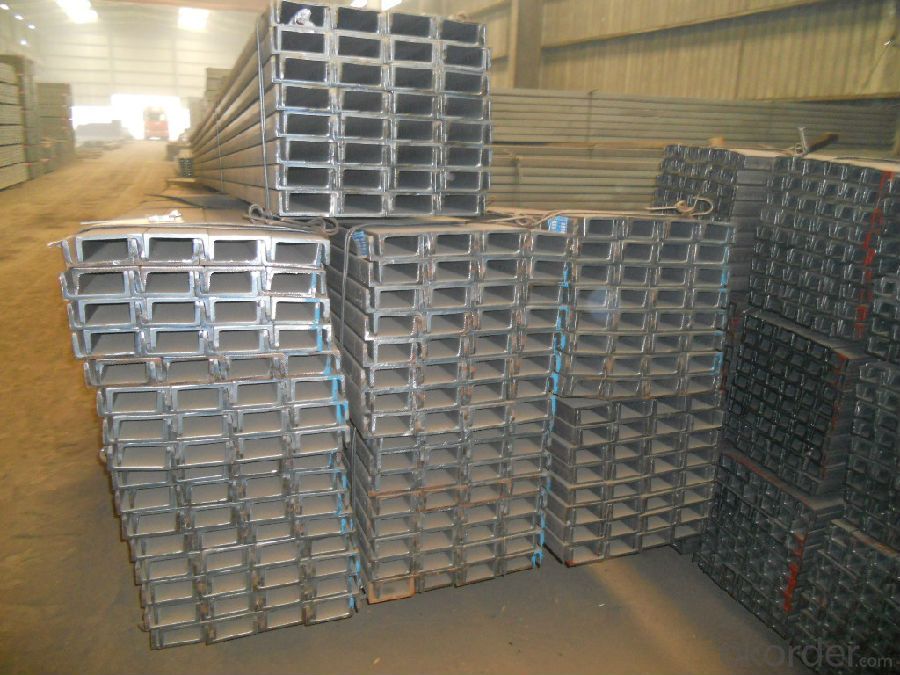
- Q: How do steel channels contribute to structural stability?
- The contribution of steel channels to structural stability is multifaceted. Primarily, they provide additional strength and support to the structure. The unique shape of steel channels, characterized by a wide base and narrow top, enables them to bear heavy loads and withstand bending or twisting forces. Consequently, they are highly suitable for incorporation into beams, columns, and other structural elements. Furthermore, steel channels can serve as reinforcement within concrete structures. When integrated into concrete, they enhance the overall strength and durability of the structure. The utilization of steel channels aids in distributing the load across a larger surface area, thereby diminishing stress concentrations and averting localized failures. Additionally, steel channels have the capacity to interconnect, forming a framework that heightens the rigidity of the structure. By establishing an interconnected network of steel channels, a system capable of resisting lateral forces such as wind or earthquakes is created. This fortifies the stability of the structure and safeguards it against collapse or damage during extreme events. Moreover, steel channels possess exceptional resistance to corrosion, a pivotal characteristic for ensuring long-term structural stability. Unlike other materials, steel channels do not easily deteriorate when exposed to moisture, chemicals, or extreme temperatures. This durability ensures the integrity of the building remains intact throughout its lifespan. In conclusion, steel channels play an indispensable role in augmenting the structural stability of buildings and other structures. Their strength, versatility, ability to reinforce concrete, and resistance to corrosion render them an essential component in the realm of construction.
- Q: How do steel channels contribute to the overall speed of construction?
- Steel channels contribute to the overall speed of construction in several ways. Firstly, steel channels are pre-fabricated components that can be easily manufactured off-site and delivered to the construction site. This eliminates the need for on-site fabrication, reducing construction time significantly. Moreover, steel channels are lightweight yet strong, allowing for easier handling and installation. This means that construction workers can quickly and efficiently assemble these components, saving time and labor costs. Additionally, steel channels can be easily connected using various fastening methods such as welding or bolting, further expediting the construction process. Furthermore, steel channels offer great flexibility in terms of design and can be easily modified or adjusted during construction. This adaptability allows construction projects to be completed faster, as changes can be made to the structure without significant delays or disruptions. Lastly, steel channels provide structural support and can be used in a variety of applications such as framing, bracing, or supporting heavy loads. Their high strength-to-weight ratio ensures the stability and durability of the construction, enabling faster progress without compromising safety. Overall, the use of steel channels in construction significantly contributes to the speed of the project by reducing fabrication time, enabling quick assembly, accommodating design modifications, and providing structural support.
- Q: What are the different methods of finishing steel channels?
- There are several methods of finishing steel channels, including painting, galvanizing, powder coating, and applying a protective coating or plating. Each method offers different benefits and is chosen based on the desired appearance, durability, and environmental considerations.
- Q: What are the different types of connections used for steel channels in curtain wall systems?
- In curtain wall systems, there are several types of connections used for steel channels. These connections play a crucial role in the structural integrity and performance of the curtain wall system. Some of the commonly used connections are: 1. Welded Connections: In this type of connection, the steel channels are joined together by welding. This method provides excellent strength and rigidity to the curtain wall system. Welded connections are often used in high-rise buildings or structures that require maximum load-bearing capacity. 2. Bolted Connections: Bolted connections involve using bolts and nuts to secure the steel channels together. This type of connection allows for easy installation and disassembly, making it suitable for situations where flexibility is required. Bolted connections are commonly used in curtain wall systems where frequent adjustments or modifications may be necessary. 3. Clamped Connections: Clamped connections utilize clamps or brackets to hold the steel channels in place. These connections are often used in curtain wall systems that require quick installation or where drilling or welding is not preferred. Clamped connections provide ease of assembly and disassembly, making them suitable for temporary structures or buildings with frequent changes. 4. Adhesive Connections: Adhesive connections involve the use of high-strength adhesives or epoxy to bond the steel channels together. This type of connection provides excellent load transfer and can distribute stress evenly. Adhesive connections are commonly used in curtain wall systems that require a seamless appearance or where aesthetics are a priority. 5. Combination Connections: In some cases, a combination of different connection types may be used to achieve optimal performance. For example, a curtain wall system may utilize a combination of welded and bolted connections to provide both strength and flexibility. Combination connections are often used in complex or specialized curtain wall systems that require specific load-bearing capabilities. It is important to note that the selection of connection type depends on various factors such as the structural requirements, building codes, design considerations, and installation constraints. Consulting with a structural engineer or curtain wall specialist is essential to determine the most suitable connection type for a specific curtain wall system.
- Q: Can steel channels be used for staircases?
- Yes, steel channels can be used for staircases. Steel channels are often used in construction for their strength and durability. They can provide a sturdy framework for staircases and help support the weight of individuals using the stairs. Additionally, steel channels can be customized to fit the specific dimensions and design requirements of the staircase. They can also be fabricated with various finishes and coatings to enhance their appearance and protect against corrosion. Overall, steel channels offer a reliable and versatile option for constructing staircases.
- Q: Do steel channels have any specific deflection limitations?
- Yes, steel channels have specific deflection limitations. The deflection of steel channels depends on various factors such as the size, shape, and thickness of the channel, as well as the applied load. To ensure structural integrity and prevent excessive deflection, engineers typically follow industry standards and design codes that specify maximum allowable deflection limits for different applications.
- Q: What are the aesthetic options for steel channels?
- Enhancing the aesthetic appeal of steel channels can be achieved through various methods. One possibility is the application of a powder coating, which not only provides a durable finish but also adds attractiveness. Customization is made possible by the wide range of colors available for powder coating, allowing it to match specific design requirements. Another alternative is galvanizing the steel channels, wherein a protective zinc coating is applied to prevent corrosion. This results in a distinct silver-gray appearance that adds a sleek and modern touch to any space. Furthermore, steel channels can also be polished to a high shine, creating a reflective surface that imparts elegance and sophistication to architectural designs. Ultimately, the options for enhancing the aesthetics of steel channels are diverse, making it possible to tailor them to different design preferences and project requirements.
- Q: Can steel channels be used in mezzanine construction?
- Certainly! Mezzanine construction can certainly benefit from the usage of steel channels. These channels are widely employed in the construction of buildings due to their exceptional strength and longevity. Mezzanines, which are intermediate floors inserted between a building's primary floors, enhance the available space and functionality. To ensure stability and support for the structure, steel channels can be utilized as either beams or columns in mezzanine construction. Their fabrication and installation are hassle-free, rendering them an optimal choice for mezzanine construction projects. Furthermore, steel channels can be tailor-made to meet specific design requirements and can be combined with other steel components like plates and angles, resulting in a sturdy and dependable mezzanine structure.
- Q: Can steel channels be used in interior design?
- Yes, steel channels can be used in interior design. Steel channels can provide structural support and can be used to create unique and modern design elements such as room dividers, shelving units, and even furniture pieces. Their sleek and industrial look can add a contemporary touch to interior spaces.
- Q: Can steel channels be used for creating support structures for water treatment systems?
- Yes, steel channels can be used for creating support structures for water treatment systems. Steel channels are commonly used in construction and engineering projects due to their strength, durability, and ability to support heavy loads. When designing support structures for water treatment systems, it is important to consider the weight and size of the equipment and ensure that the support structure can withstand the load. Steel channels provide a robust and reliable option for creating support structures that can withstand the demands of water treatment systems. Additionally, steel channels can be easily fabricated and customized to fit specific project requirements, making them a versatile choice for creating support structures in water treatment systems.
Send your message to us
Structure U Channel Steel high quality
- Loading Port:
- Tianjin
- Payment Terms:
- TT OR LC
- Min Order Qty:
- 25 m.t
- Supply Capability:
- 20000 m.t/month
OKorder Service Pledge
OKorder Financial Service
Similar products
Hot products
Hot Searches
Related keywords
